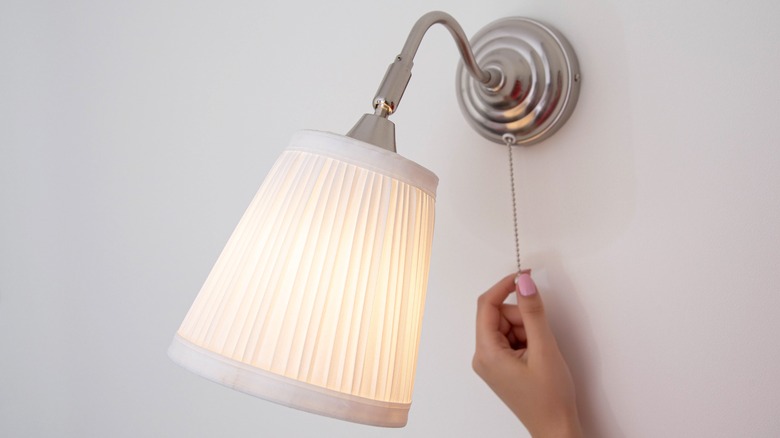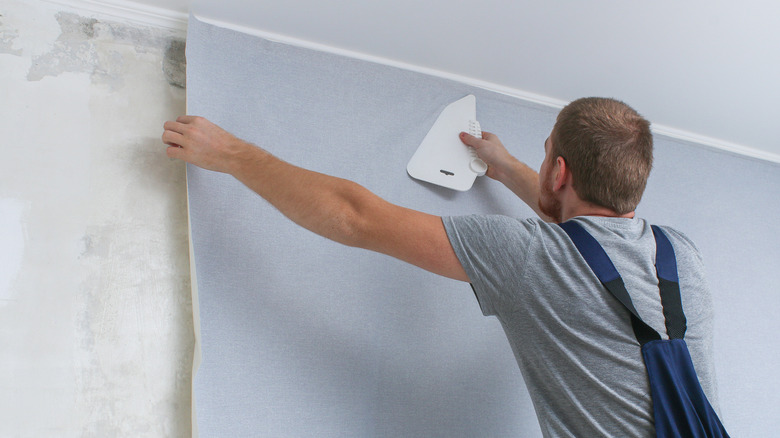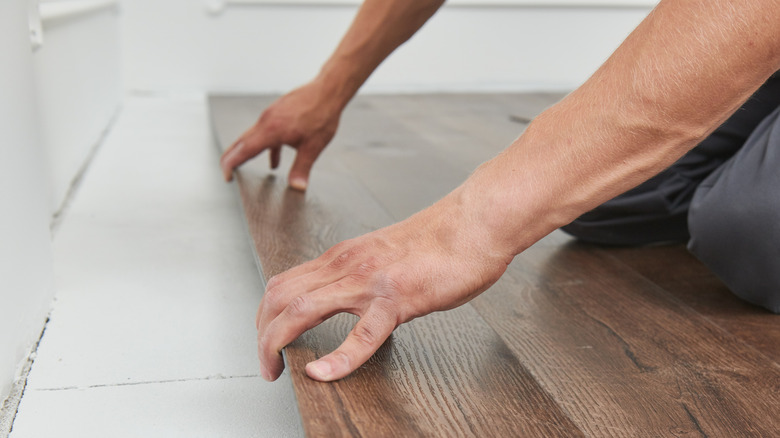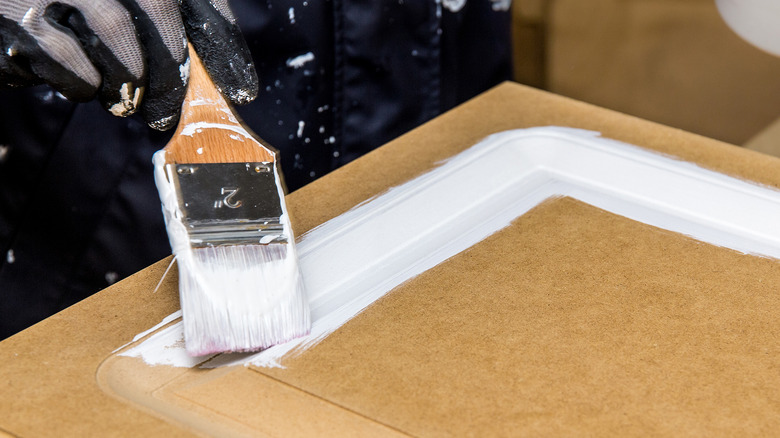The Best Tips From Rental Redo For Updating Your Rented Space
Keyanna Bowen believes that renting a property shouldn't mean having to live in a boring home. She also believes you don't have to spend a ton of money on a space you don't own in order to create something magical. That's why, on "Rental Redo" by Discovery+, Bowen creates stunning designs that can be reversed whenever you move out.
A first apartment is a big milestone. Whether it's during college, after graduation, or moving out of their parents' house, many people live in an apartment before living in a purchased property. According to iProperty Management, 35% of Americans rent their home, which is about 44.2 million households across the country living in apartments, units within a larger home, or an entire rented home.
While apartments can come with a lot of benefits and amenities, they don't always allow for much freedom when it comes to decor. However, as the population of renters has grown in recent years, so have the hacks to upgrade a rented space without ruining the unit. Designer Keyanna Bowen shares her best tips with Realtor.com about creating a memorable, yet reversible, space.
Talk to your landlord first
Bowen strongly recommends speaking to your landlord before embarking on any rental redo, per Realtor.com. Every landlord is going to have a different threshold for how comfortable they are with you changing the space. Your lease will contain information about minor repairs and maintenance, says Forbes, but for larger renovations, even when they're intended to be temporary, it's important to have a conversation first.
What you're allowed to do may depend on the type of unit and the type of landlord. Renting from a private landlord often means developing a closer relationship and being able to negotiate projects face to face. But a corporate management company may be less open to bigger renovations as they want all the units in the building to remain similar.
Speaking to your landlord before starting is important because unauthorized changes can put you in violation of your lease or cause you to lose your security deposit, which can be used to make any repairs to the apartment after a renter moves out, says Apartments.com. Even minimal unauthorized changes like paint can be seen as damage that can take a chunk out of your security deposit.
Get familiar with renter-friendly items
If you get the okay from your landlord, you can start planning upgrades for your rental. Keyanna Bowen suggests getting familiar with rental-friendly materials before starting a project, per Realtor.com. Many of these are simple decor items that can freshen up the space, but you can also replace light fixtures, faucets, and hardware to create a more customized space.
Many lifestyle bloggers have added their own lights, and happily share hacks for getting around the wiring. Plug-in fixtures are a great option for renters, says The Homes I Have Made, because they create a way to add statement lighting without having to open up the walls or ceiling to do the wiring. You could even buy fixtures without wires and install battery-operated lights to give the illusion that the sconce or chandelier is wired into the wall. Kitchen and bathroom faucets are also easy to swap out. If you're not into the current faucets in your unit, you can easily change them to ones that better fit your style for now and swap them back out before you leave.
Brighten up the walls
Pictures and artwork aren't the only ways to add a unique flair to your walls. There have been major upgrades to removable and reusable materials that allow you to customize your rental home. Peel-and-stick vinyl tile can give your kitchen or bathroom the look of real tile. These high-quality replacements are water- and heat-resistant, so they're durable for high traffic areas. And because they're renter-friendly, you can remove the vinyl without damaging the wall. Keyanna Bowen suggests centering the vinyl behind the faucet to create a focal point with the backsplash (via Realtor.com).
A similar material that many renters love for their space is removable wallpaper. This is just like vinyl in application and removal, and it's great to hang in the living room, dining room, and bedroom to add color and visual interest through patterns. Southern Management Companies says to plan out your design by knowing how many walls you want to cover, and measuring the surface area before purchasing and installing the wallpaper. As with anything else, let your landlord know of your plans in advance.
Update the floors
Floors are one of the features of a home that are hard to change cosmetically. Installing new tile or hardwood floors, or staining pre-existing floors isn't something renters can do, but that doesn't mean you can't change up the look of your apartment. Keyanna Bowen likes the concept of removable vinyl for the floors, as well. Choosing a peel-and-stick that is specifically made for flooring can mimic the look of stone or tile with an easy installation. Look for products that are durable and scratch-resistant, so they don't wear down too quickly.
You do have to be careful about picking the proper type of flooring and pay attention to the adhesive attached to whatever peel and stick tile you buy. Some vinyl tiles are better installed directly to the subfloor, which is often impossible for renters, says Kate Decorates. Furthermore, some adhesives can damage wood floors, according to Rug Pad USA. Review the instructions to prevent causing permanent damage or skimping on a solid installation.
Transform the cabinets
The kitchen is a great place to show off some personality. Unfortunately, most rental unit kitchens feature neutrals to appeal to the widest range of renters. There are still some creative ways to put your stamp on the kitchen. Bowen was once able to give her clients' cabinets a fresh coat of paint and ended up transforming dull cream-colored cabinets to a blue-green for a blissful beach vibe. However, painting cabinets isn't always possible for renters.
You can usually swap out the hardware on the front of the drawers and cabinets, though, just like you would a faucet. These are easily removed and easy to install, and they add a unique pop to the design. All you have to do is unscrew the hardware and screw in your newly chosen pieces in place of the originals. Woodworker's Hardware suggests keeping the original hardware pieces in a bag and storing them until you're ready to move out. This way, you can replace the hardware and take the ones you prefer to your next space.





